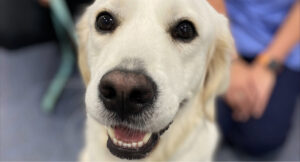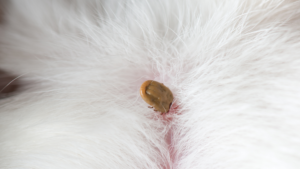What are cat fight abscesses?
They’re cute and cuddly when they want to be, but our beloved felines can also be ferocious fighters armed with razor sharp claws and teeth! Territorial by nature most cats don’t take kindly to strange cats in their zone. Fighting puts cats at risk of nasty infections including viruses like Feline Immunodeficiency Virus (FIV) and bacterial infections. One of the most common presentations for cats with bacterial infections are abscesses, or cat fight abscesses (CFA). They may also be referred to as cat bite abscesses. An abscess is a painful swelling that is filled with pus. Cat fight abscesses develop after a bite from another cat as the bacteria from the mouth is injected into the other cat’s skin. The introduction of the bacteria can cause swelling, pain, infection, and inflammation under the skin and if left untreated can cause systemic infection. One of the most common bacteria implicated in cat fight abscesses is Pasteurella multocida.
Who is affected?
Cats of all ages that have contact with other cats, and particularly cats from different households or free roaming cats. Less commonly, cats from the same household may have a disagreement that results in someone being bitten!
According to PetSure data over the 2020 calendar year, cats under two years old had the highest prevalence of cat bite abscesses. This could be due to young adult cats exploring and establishing their territories. It may be possible to prevent cat fight abscesses by keeping your beloved feline indoors or in a cat safe enclosure. This also dramatically reduces the risk of other mishaps as well, like road accidents, tick and snake bites as well as helps to protect our wonderful Aussie wildlife.
According to PetSure claims data in 2020, cat bite abscesses were most prevalent in the following breeds:
| Breed | Prevalence |
| Domestic shorthair cat | 2.4% |
| Russian Blue | 2.36% |
| Siamese | 2.11% |
| Bengal | 2.04% |
| Pixie-Bob | 1.8% |
| Burmese | 1.68% |
| Tonkinese | 1.28% |
| Ragdoll | 1.1% |
| Devon Rex | 1.08% |
| Birman | 1.01% |
Prevalence = Total number of unique claiming pets / total number of insured pets across 12-month period. Excludes breeds with less than 500 active pet insurance policies.
Signs of a cat fight abscess
A history of fighting or roaming may alert you to the possibility that your cat could have been in a cat fight. Shortly after a fight, you may not notice much, as the wounds may be small and hard to find in thick fur. It is worth carefully going over your cat however as you may notice small clumps of hair sticking together with saliva or blood, covering small puncture wounds, scratches, or redness. Your cat may also appear painful in the affected area, which may mean they become agitated if you touch the area, they may lick the area excessively or avoid putting weight on an affected leg. Abscesses can develop over two or three days after the initial bite. The abscess may appear as a swelling, be hot to touch, and is usually very painful. Sometimes, the abscess ruptures and pus and blood may be draining out of it. The feline patient may develop a fever and become disinterested in eating, drinking and normal activities. If you are concerned that your kitty has been in a fight, reach out to your Vet who will be able to advise you.
Management of cat bite abscess
Prevention is much better than cure for cat bite abscesses. You can protect your cats from fighting with unknown cats by keeping your cat indoors or only allow outdoor access via an outdoor, secure cat enclosure.
Cat bite abscess are not only painful and stressful for your cat, serious and potentially fatal diseases such as Feline immunodeficiency virus (FIV) and Feline Leukaemia Virus (FeLV) can be spread between cats via bite and fight wounds.
Your cat will need veterinary care if it has developed a cat fight abscess. Treatment often involves lancing (which means opening and draining) the abscess under general anaesthetic. Occasionally it may be possible that your Vet can do this without a general anaesthetic, or under sedation, but your Vet will be able to advise you of the best option for your cat. Pain relief and antibiotics form the mainstay of treatment to help keep your cat pain free and eliminate the infection. Sometimes a drain will be stitched in place for a few days to help the infected material drain out freely. In cats with signs of systemic infection, or who haven’t been eating and drinking, hospitalisation may be required. These cats often need to be on a “drip” of intravenous fluids to help with dehydration, and even injectable antibiotics to help combat serious infection. Your Vet may also recommend blood tests to check for kidney or other organ function, as well as test for Feline Immunodeficiency Virus and Feline Leukaemia Virus (FeLV).
How much does it cost to treat?
According to PetSure claims data from the 2020 calendar year, the average, single treatment cost relating to cat bite abscesses was $317, with the highest, single treatment cost being $2,636.
Is cat bite abscess covered by pet insurance?
Cat bite abscess is generally covered by Comprehensive Accidental Injury and Illness pet insurance policies administered by PetSure (check our brand partners at petsure.gholab.com.au/partners), unless related to a pre-existing condition or exclusion. Refer to your policy documents including Certificate of Insurance and Product Disclosure Statement for more information on whether this condition is covered under your policy.
Disclaimer: Reimbursement for these claims would be subject to limits, such as annual benefit limits or sub-limits, benefit percentage, applicable waiting periods and any applicable excess. Cover is subject to the policy terms and conditions. You should consider the relevant Product Disclosure Statement or policy wording available from the relevant provider.
REFERENCE
- https://icatcare.org/advice/cat-bites-and-abscesses/#:~:text=After%20two%20to%20three%20days,Abscesses%20are%20often%20very%20painful.
- https://www.bsavalibrary.com/content/chapter/10.22233/9781910443149.chap5_8
- https://www.pethealthnetwork.com/cat-health/cat-diseases-conditions-a-z/cat-bites-don%E2%80%99t-underestimate-serious-injury
Pet insurance can help by covering a portion of the eligible vet bill if the unexpected happens. Because it is difficult to predict the costs of veterinary care, it can help to have measures in place to help prepare for the unexpected. Check out our partner network and explore our policy tools to find a pet insurance policy.
Not all conditions or items are covered by Pet Insurance. Refer to the applicable Product Disclosure Statement for information about coverage and exclusions.








